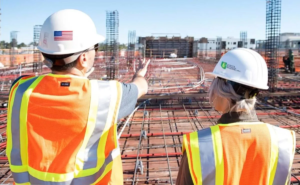Window Replacement is a great way to add energy efficiency and improve your home’s appearance. But there are many factors to consider when choosing a contractor.

Make sure to get multiple quotes and compare prices. Look for a company that offers lead-safe certifications. Also, pay attention to how the company calculates its costs. Visit Website to learn more.
There are several factors that influence the cost of window replacement. These include the type of window, its function, and its appearance. The cost of the window will increase if it is larger or more complex than a standard window. Some windows also require special installation and labor, which can drive up costs. Some types of windows are more energy-efficient than others, and may offer a higher return on investment. However, homeowners should keep in mind that these upgrades will not add value to their home dollar for dollar.
Homeowners who are looking for a window replacement can choose from a variety of styles, sizes, and materials. Some of the most popular options are vinyl, wood, and aluminum-clad. Each has its own unique characteristics, but they all offer excellent insulation and durability. Homeowners can also find more efficient windows with a high rating on Energy Star’s Most Efficient Windows list. The cost of these windows will be offset by energy savings and a tax credit.
The type of window replacement required can also affect the overall cost. A “pocket” replacement will involve replacing the sashes and frames of an existing window, while a new-construction window requires removing the old frame. The latter option is more expensive, but it may be necessary if the existing frame is damaged or rotted.
Another factor that can affect the cost of window replacement is the type of window frame. Some options are less expensive than others, but they all offer good insulation and durability. Aluminum frames, for example, are lightweight and resist bending and warping. They are not as strong as fiberglass, but they still provide a good alternative to steel and wood.
The window replacement cost can also depend on the size of the window and the number of windows being replaced. In addition, the homeowner should consider the cost of installation and the labor involved. The best way to save money is to hire a professional window installer. This can be done by searching online or using a local marketplace for services. Homeowners can also use a line of credit or home equity loan to finance their window replacement project. This will help them avoid paying high interest rates and will give them more financial flexibility in the future.
Energy Efficiency
Many people choose to replace their windows with energy efficient ones in order to save money on their heating and cooling costs. This is because new windows are designed with features that reduce energy loss, such as double or triple glazing and insulating gas between panes. These features help to keep homes warmer in the winter and cooler in the summer. However, the type of window replacement needed depends on a number of factors, including the type of frame and sash materials.
New replacement windows are usually much more energy efficient than older models. They are also more likely to have a low U-factor, which measures how well the window insulates. This factor is determined by the glass, frame, and spacers. In addition, many new windows are rated by the ENERGY STAR label, which provides consumers with information about the window’s energy efficiency and performance.
Homeowners are typically offered a variety of frames to choose from when they are having new windows installed. These include aluminum, wood, and vinyl. Generally, the better-insulated materials such as vinyl and fiberglass are more energy efficient than aluminum. Additionally, these materials are less prone to warping and condensation.
Another benefit of new windows is their soundproofing capabilities. This is a great feature for homeowners who live in busy areas, where traffic noise can be a constant nuisance. It is important to note, however, that the soundproofing capacity of a window only applies to its inner glass. It does not apply to the outer glass, which is often made of a different material.
Besides saving on utility bills, energy-efficient windows can also lower homeowner maintenance costs by making their homes more comfortable and easier to heat and cool. They can also add value to the property and increase its resale potential. Additionally, they can reduce indoor air pollutants and help the environment by reducing carbon dioxide emissions.
In general, it takes around 70 years for energy savings to cover the cost of a new window. This is well beyond the warranty period and practical life expectancy of most windows, so energy efficiency improvements rarely pay for themselves in a financial sense.
Durability
Whether you’re a new homeowner or are preparing to sell your property, window replacement is an important investment. However, how long your windows last depends on the type of window you choose and the installation company you select. Knowing which types of windows are known for their durability can help you make the best choice for your home.
Typically, the lifespan of your windows is dictated by how much they are exposed to the elements. Wood windows, for example, are more susceptible to damage from extreme heat and moisture. They can also deteriorate faster if they are located on the east or west side of your house, where direct sunlight may damage them.
One of the most common signs that it’s time to replace your windows is when they become difficult to open or close. This can be due to natural settling of your home, or simply wear and tear on the hardware. If the problem persists, it might be time to consider replacing them with a more energy-efficient option that will improve your home’s efficiency and safety.
Another sign that your windows aren’t functioning properly is if you notice air leaks around them. This can be caused by warping frames or damaged weatherstripping, and it will result in drafty rooms and higher heating costs. Replacing your windows with more energy-efficient options can lower your heating and cooling bills, increase your comfort level, and improve the aesthetic appeal of your home.
Sometimes, the motivation to replace your windows is purely cosmetic. Old, outdated windows can detract from your home’s curb appeal and reduce its value. Fortunately, there are many styles and colors of new windows that can add a fresh, updated look to your home.
If you’re ready to invest in a new set of windows for your property, be sure to compare the quality of materials and installation services that each company offers. The right window provider can make all the difference in how long your windows last and the overall quality of your home. Be sure to visit a showroom and actually see and touch the products you’re considering before making any decisions.


